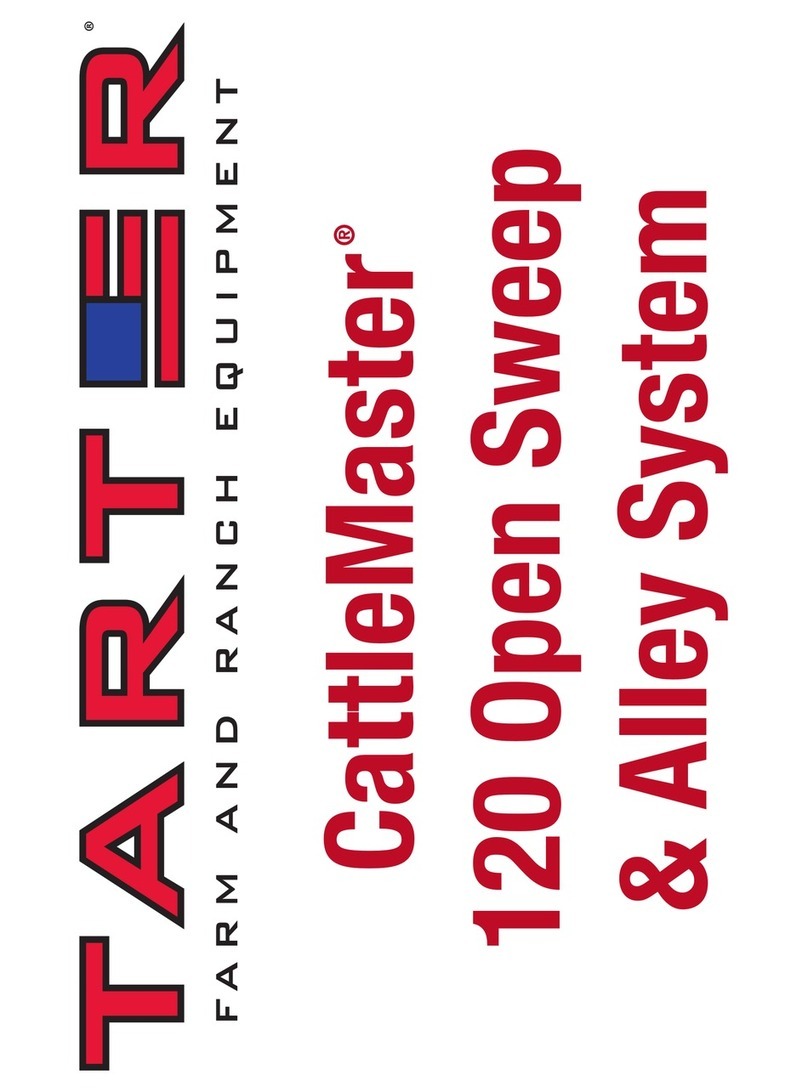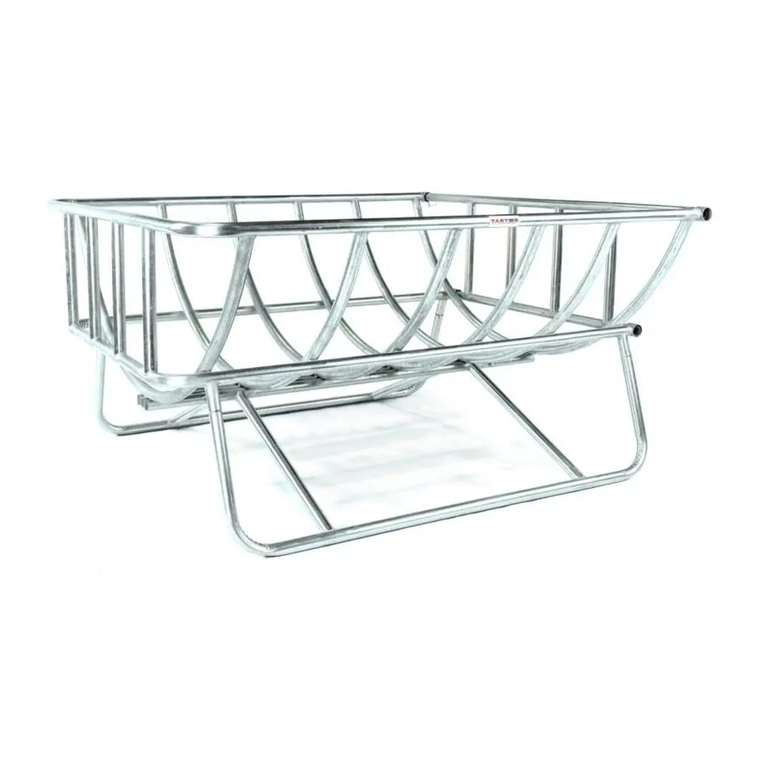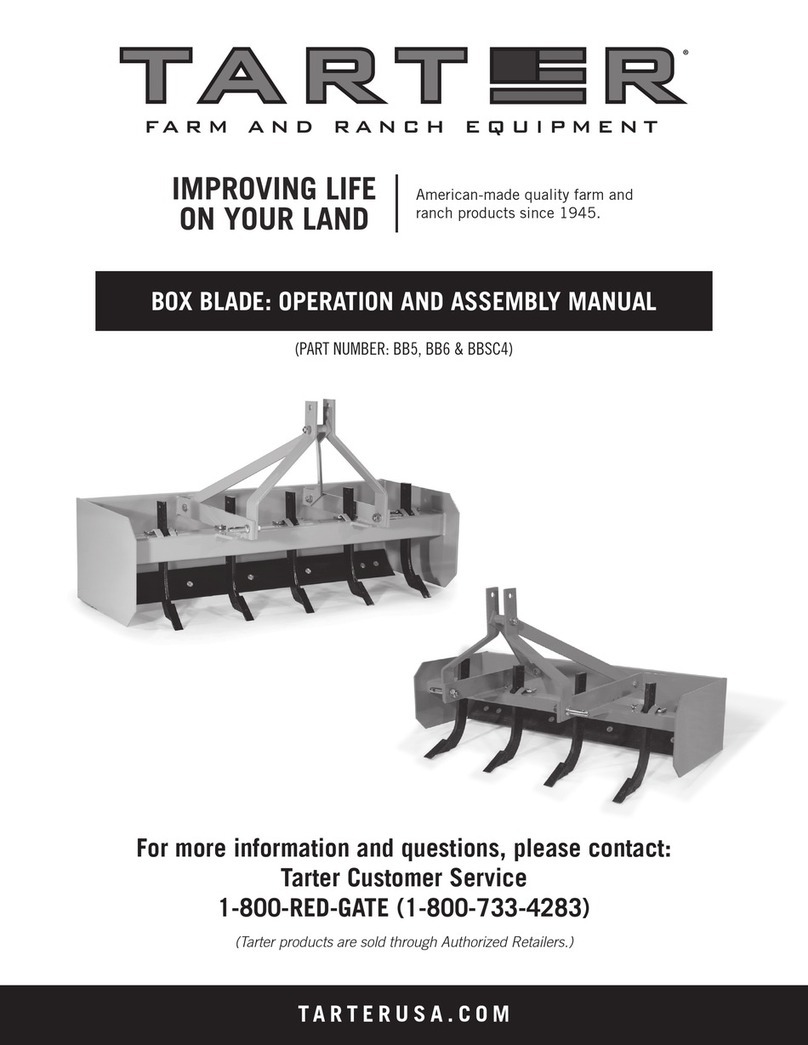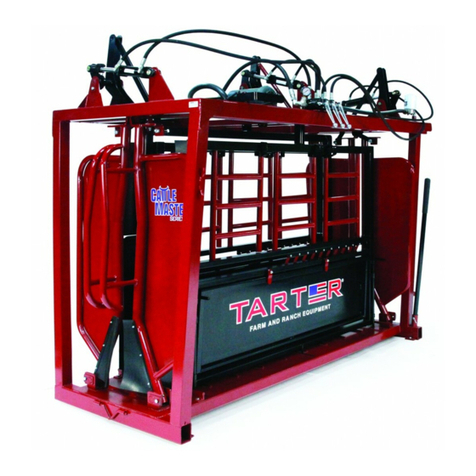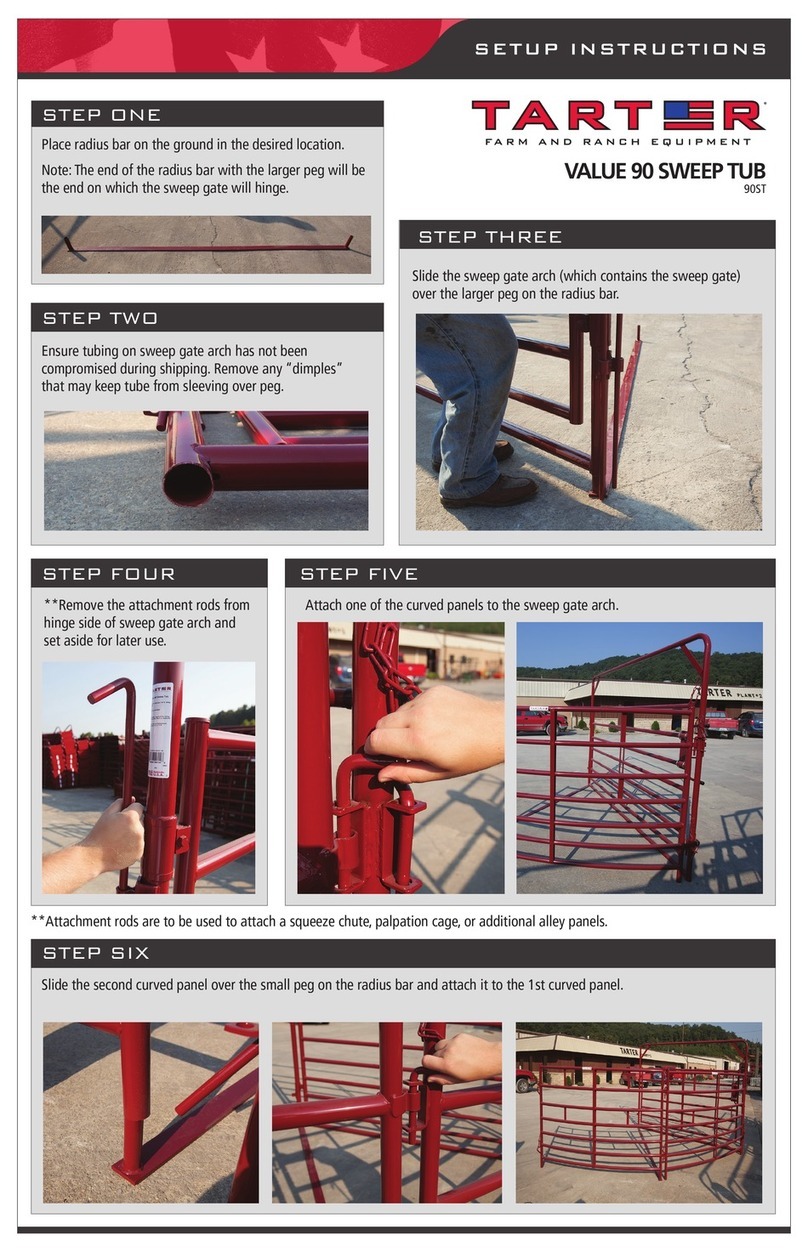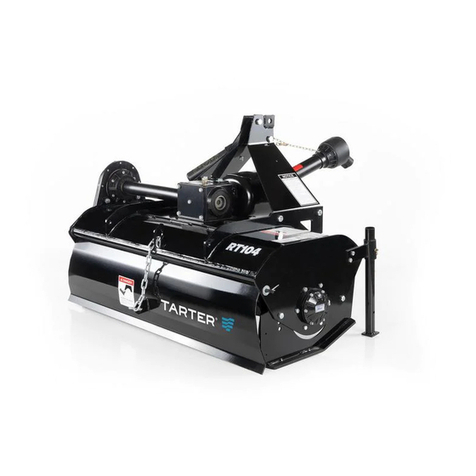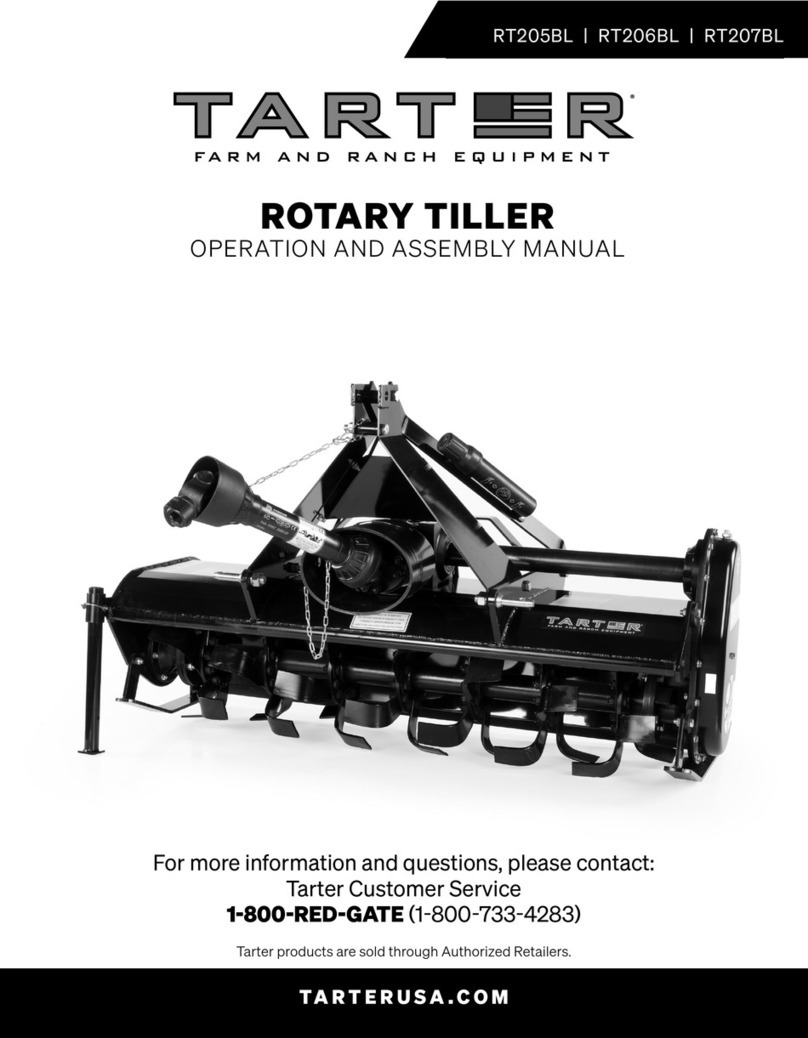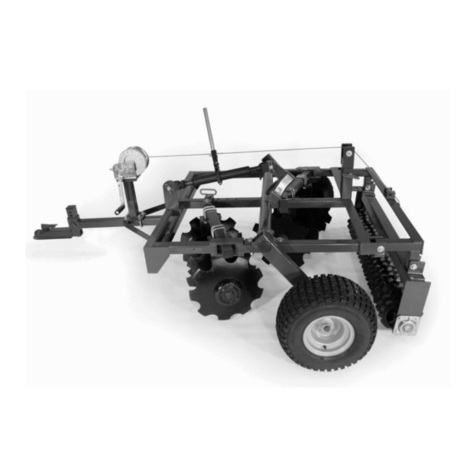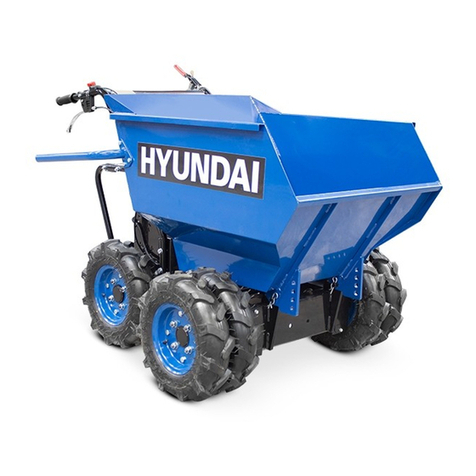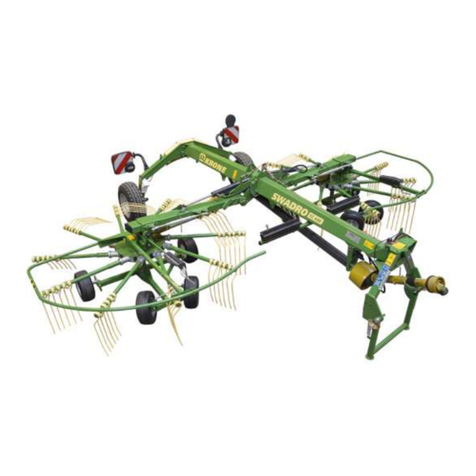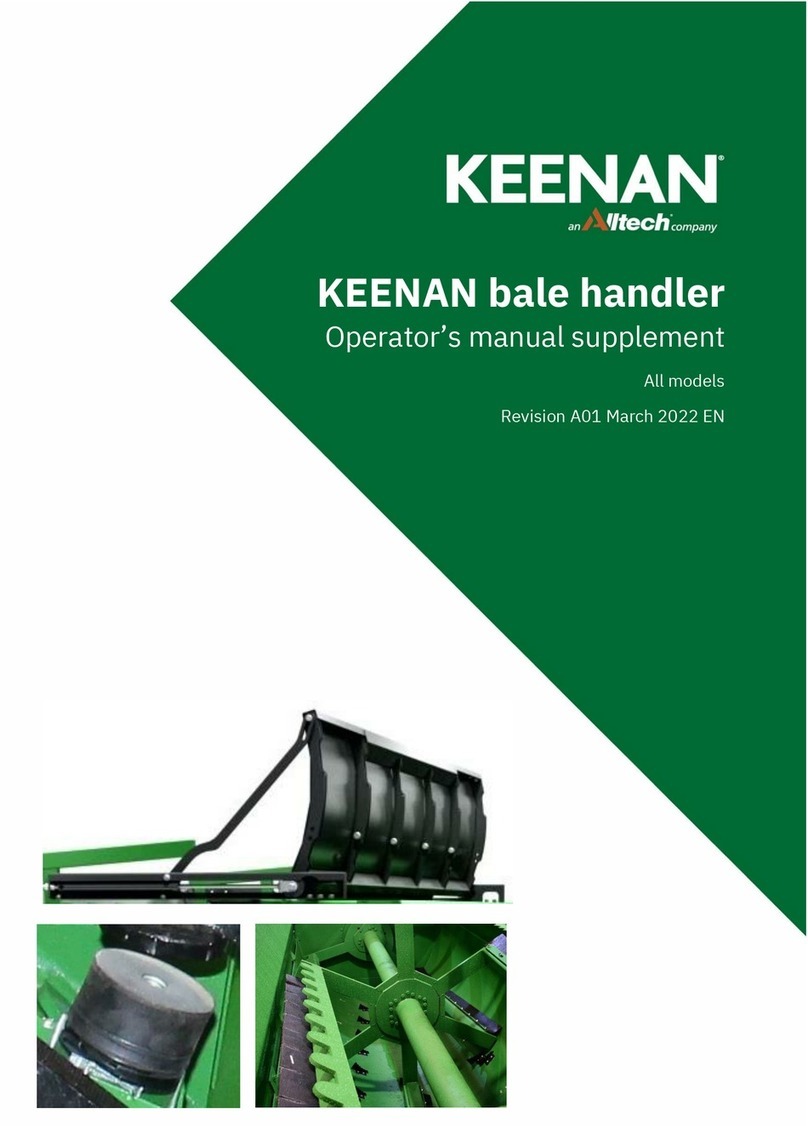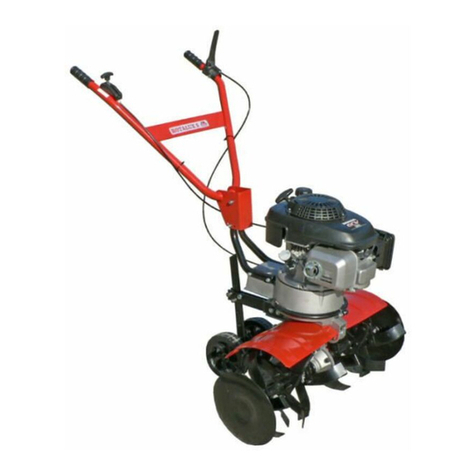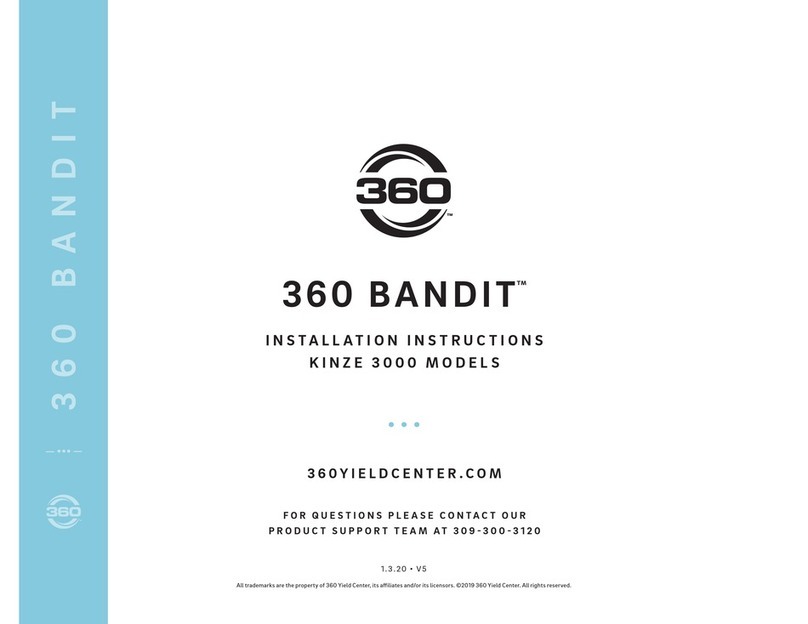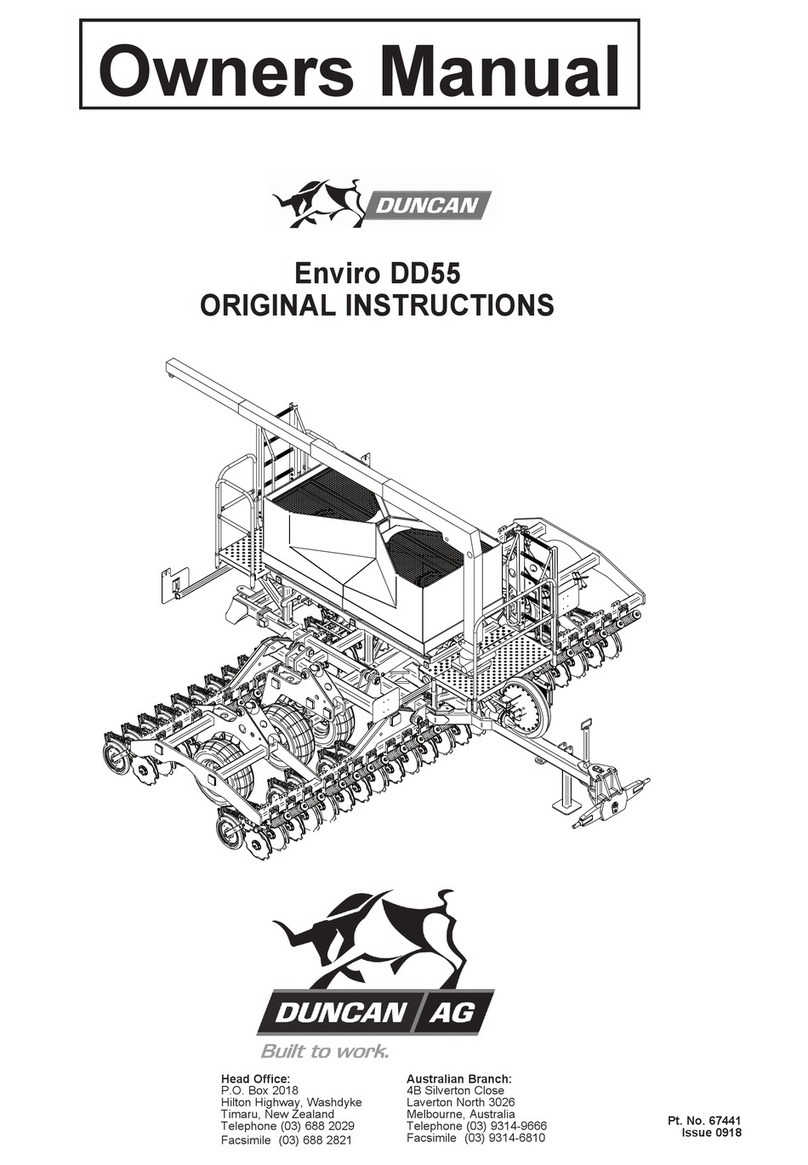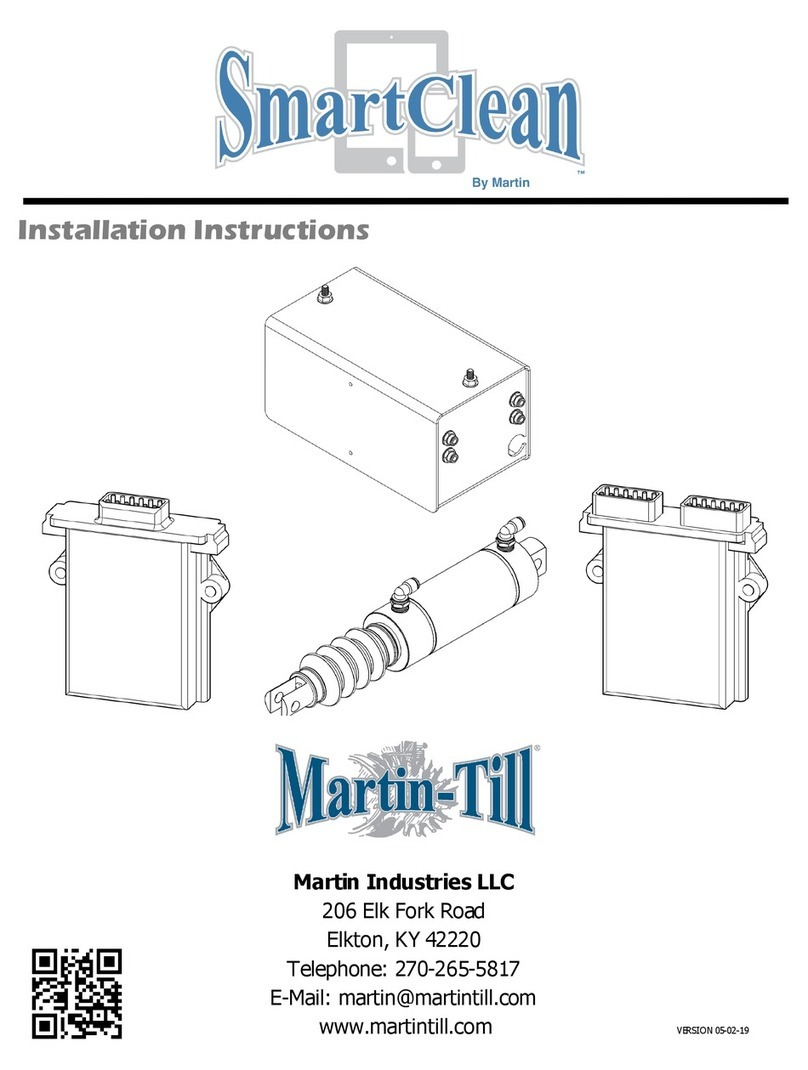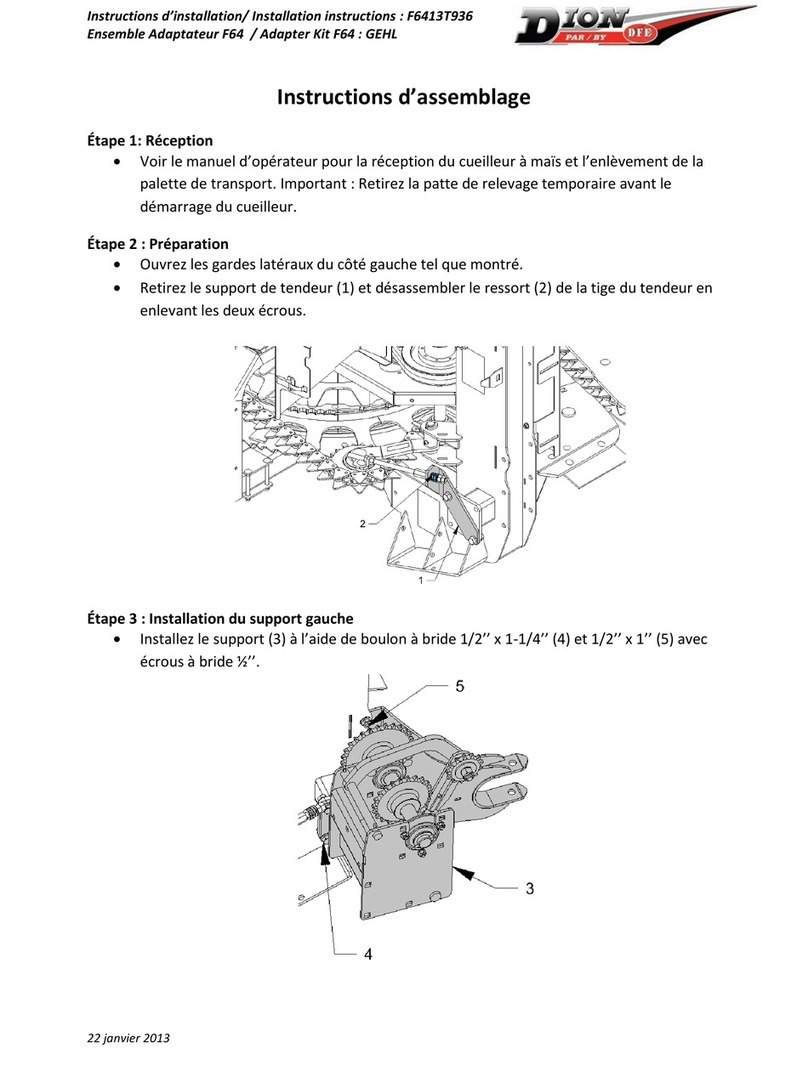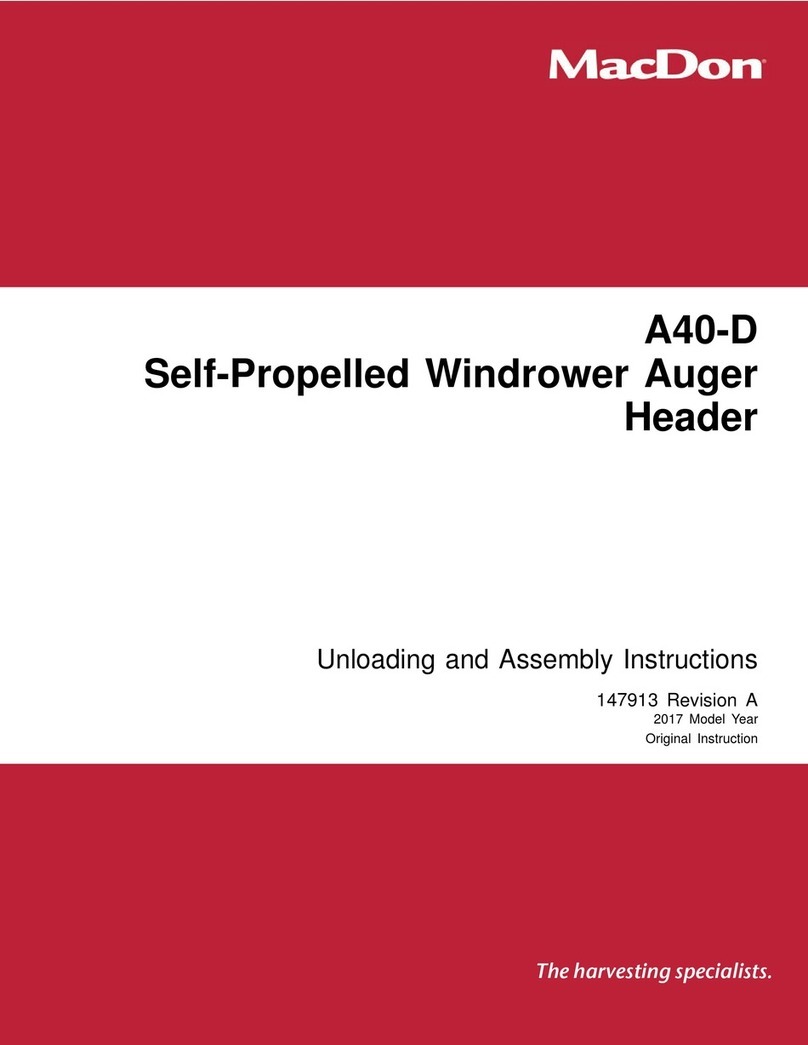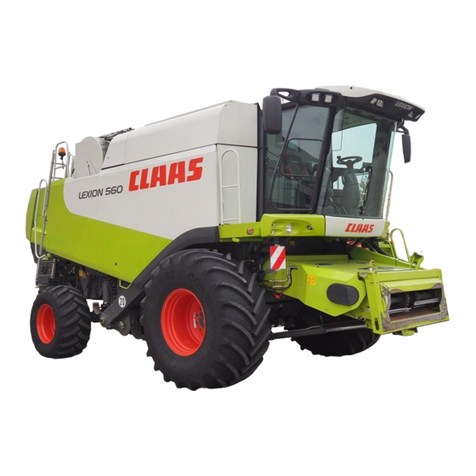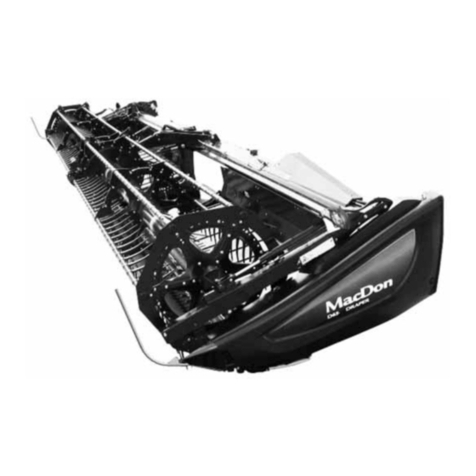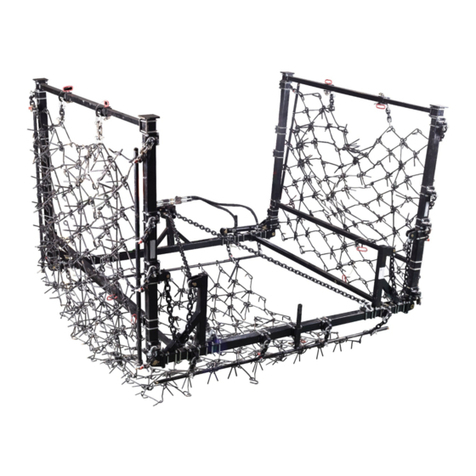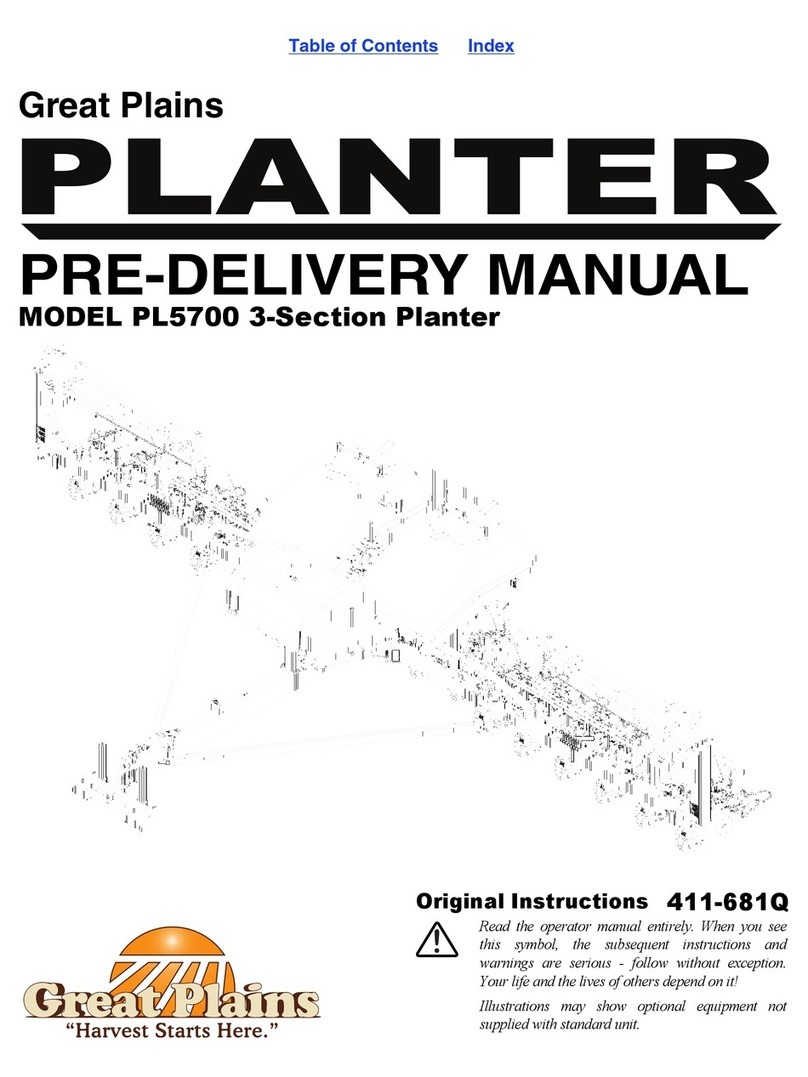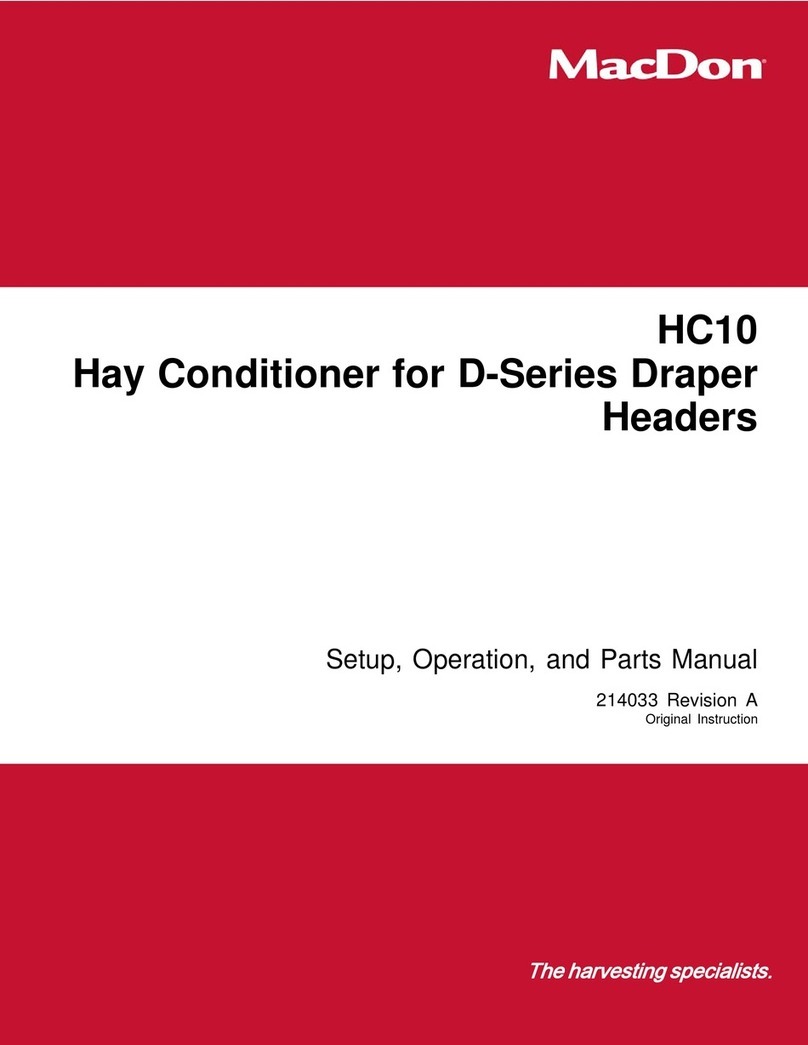
11
SAFETY
(Safety continued from previous page)
Keep hands, feet, hair and clothing away from the power
unit and Tarter implement while the power unit engine is
running. Stay clear of all moving parts.
Always sit in the power unit seat when operating controls
or starting engine. Securely fasten seat belt, place
transmission in neutral, engage brake and ensure all other
controls are disengaged before starting the power unit
engine.
DO NOT EXCEED the power unit PTO at 540 RPM.
Look down and to the rear and make sure area is clear
before operating in reverse. REVERSE OPERATION IS
NOT RECOMMENDED.
Be aware that turning the power unit tightly may cause
the Tarter implement to come in contact with the rear
wheels of the power unit and cause damage or injury.
Watch for hidden hazards on the terrain during operation.
Do not operate on steep slopes.
Do not stop, start or change directions suddenly on
slopes.
Use extreme care and reduce ground speed on slopes
and rough terrain. When encountering rough terrain,
reduce the power unit speed to minimize the horizontal
movement of the Tarter implement.
Stop the power unit and equipment immediately
upon striking an obstruction. Turn off engine, remove
key, inspect, and repair any damage before resuming
operation.
MAINTENANCE
Make certain all movement of the power unit and Tarter
implement components has stopped before approaching
for service.
Before detaching the power unit from the Tarter
implement or performing any service or maintenance,
follow these steps: disengage power to the power unit,
lower the 3-point hitch and all raised components to
the ground, set parking brake, stop engine, remove key
and unfasten seat belt. Before performing any service or
maintenance, disconnect driveline from tractor PTO.
Before working underneath the power unit or a Tarter
implement, carefully read this manual’s instructions,
disconnect driveline, raise implement, securely block up
all corners with jack stands, and check stability. Secure
blocking prevents a Tarter implement from dropping
due to hydraulic leak down, hydraulic system failures or
mechanical component failures.
Never go underneath a Tarter implement (lowered to
the ground or raised) unless it is properly blocked and
secured. Never place any part of the body underneath the
power unit or a Tarter implement or between moveable
parts even when the engine has been turned off. Hydraulic
system leak down, hydraulic system failures, mechanical
failures, or movement of control levers can cause a Tarter
implement to drop or rotate unexpectedly and cause
severe injury or death. Follow the power unit and Tarter
implement manual for working underneath and blocking
procedures.
Always wear relatively tight and belted clothing to avoid
getting caught in moving parts. Wear sturdy, rough-soled
work shoes and protective equipment for eyes, hair,
hands, ears, and head. When appropriate wear a respirator
or filter mask.
Keep all persons away from you while performing
adjustments, service or maintenance.
Frequently check blades/tines/shanks. They should be
sharp, free of nicks and cracks and securely fastened. Do
not handle blades/tines/shanks with bare hands. Careless
or improper handling may result in serious injury.
Do not modify, alter or permit anyone else to modify or
alter the power unit, the Tarter implement or any of their
components in any way, except as outlined in this manual.
STORAGE
Always use a power unit to position a Tarter implement for
storage.
Block the Tarter implement securely for storage.
Keep children and bystanders away from storage area.
OPERATING INSTRUCTIONS
1. Before each use, perform all necessary maintenance
described in the maintenance section.
2. Read, understand, and follow the safety information
pertaining to training, preparation, starting and
stopping, operation, transportation, maintenance, and
storage at the beginning of this manual.
WARNING: Never attempt to move Tarter
implement by hand.




















